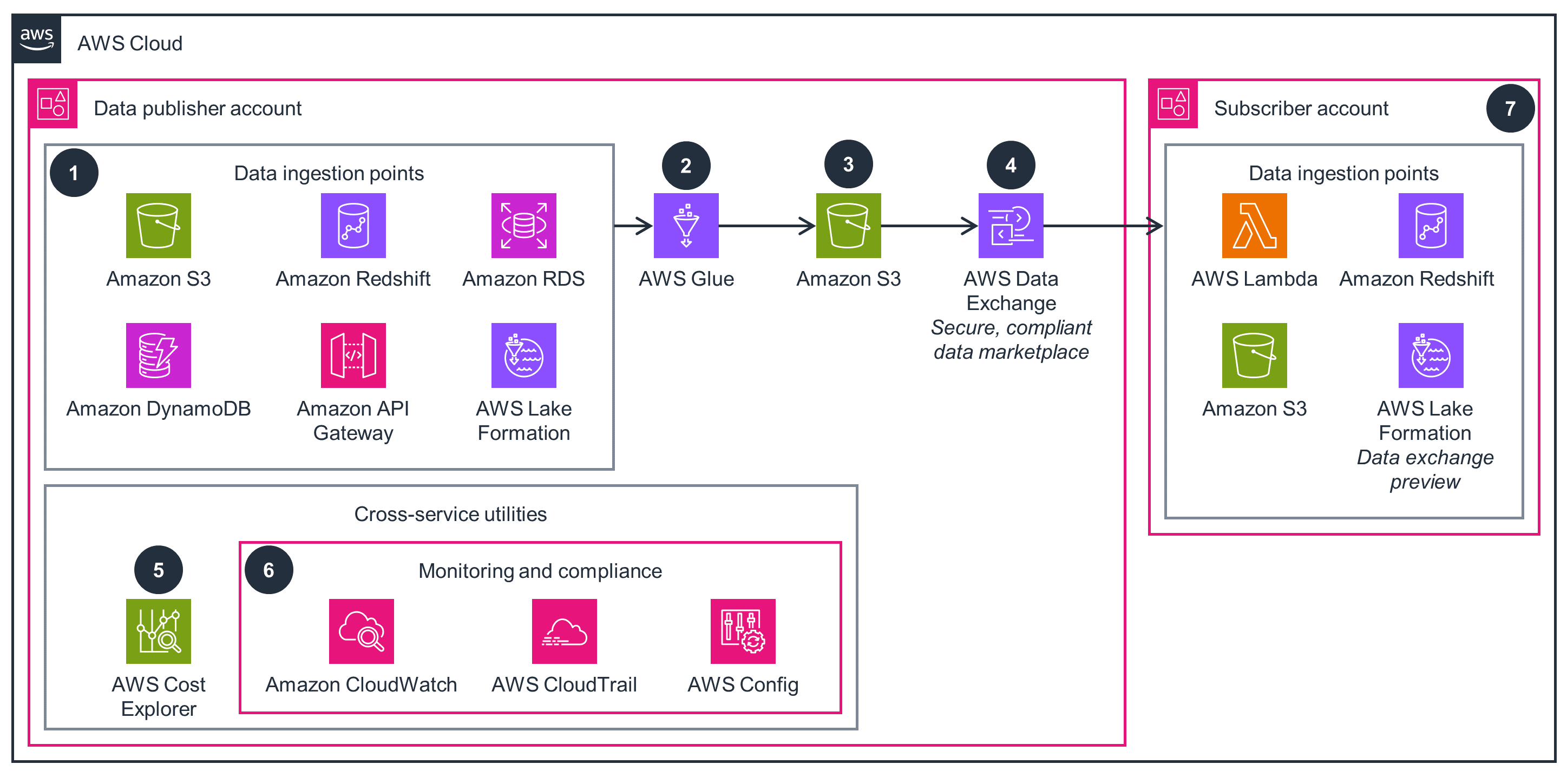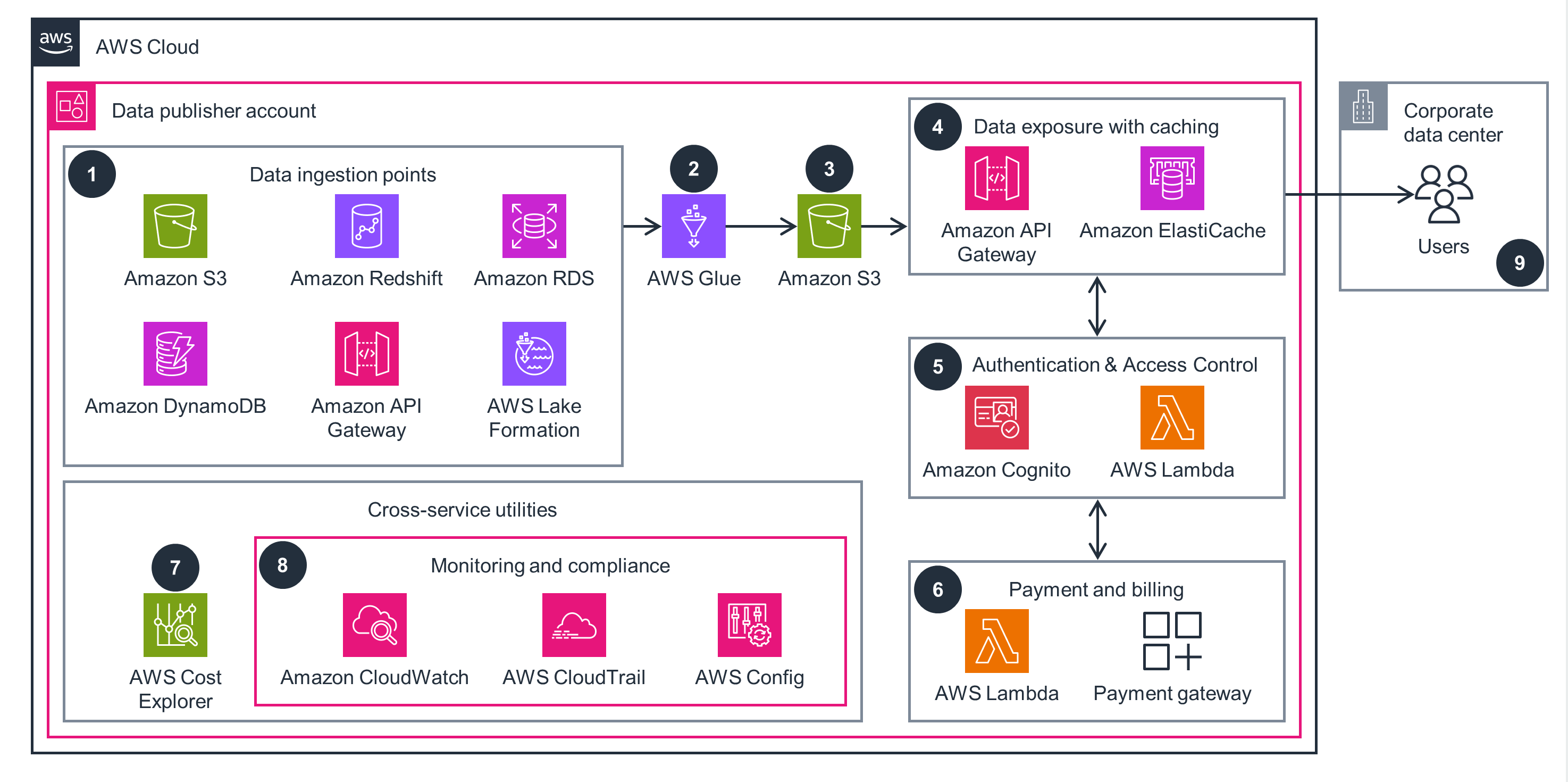Guidance for Research Data Monetization on AWS
Capture measurable business value leveraging data-driven insights
Overview
This Guidance demonstrates two ways that you can generate measurable value from research data, also known as data monetization. The first option guides you through a way to make data available to other AWS Cloud customers. With the second option, you can make your data available to customers who use other cloud providers or on-premises services. By monetizing data on AWS, either by a pay-per-use or a subscription model, you can diversify your revenue streams so that you don’t have to depend on someone else to sustainably share your research data. You can also set up this solution so that publishers or other stakeholders can set rules for content pricing based on your own parameters.
Architecture Diagram
Research Data Monetization
This architecture diagram shows how you can improve data monetization with other AWS customers.

Research Data Monetization on Premises
This architecture diagram shows how you can improve data monetization with customers that use either cloud providers other than AWS or on-premises servers.

Well-Architected Pillars
The architecture diagram above is an example of a Solution created with Well-Architected best practices in mind. To be fully Well-Architected, you should follow as many Well-Architected best practices as possible.
Disclaimer
The sample code; software libraries; command line tools; proofs of concept; templates; or other related technology (including any of the foregoing that are provided by our personnel) is provided to you as AWS Content under the AWS Customer Agreement, or the relevant written agreement between you and AWS (whichever applies). You should not use this AWS Content in your production accounts, or on production or other critical data. You are responsible for testing, securing, and optimizing the AWS Content, such as sample code, as appropriate for production grade use based on your specific quality control practices and standards. Deploying AWS Content may incur AWS charges for creating or using AWS chargeable resources, such as running Amazon EC2 instances or using Amazon S3 storage.
Did you find what you were looking for today?
Let us know so we can improve the quality of the content on our pages